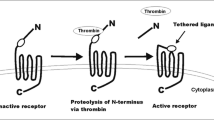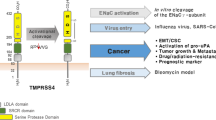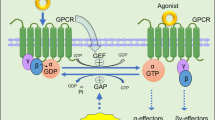Abstract
Proteinase activated receptors (PAR 1-4) are membrane receptors with a unique way of activation by proteinases like thrombin, trypsin and matrix metalloproteinases which lead to a specific cellular response. To evaluate the significance of expression and co-expression of PAR in cancer we performed a survey on published data. A Pubmed literature search on “PAR, thrombin, cancer” was performed and 46 publications were selected for systematic review based on the availability of information on tumor type, material type, detection method and specification of positive cases. PAR-1 was found in 77.3% of malignant samples (n = 678), PAR-2 in 79.5% (n = 592), PAR-3 in 12.6% (n = 87) and PAR-4 in 54.9% (n = 153). PAR-1 and -2 were present in adenocarcinomas, melanomas, osteosarcomas, glioblastomas, meningiomas, leukaemias and squamous cell carcinomas. Presence of PAR-3 was limited to kidney and liver cancer. The data on PAR-4 expression was inconclusive. Those studies analysing PAR-1 and PAR-2 reported coexpression of the two receptors. PAR-1 and -2 are widely expressed in human tumors suggesting an important role in tumorigenesis and providing potential targets for therapy. PAR-3 and PAR-4 are less frequently detectable, their expression and potential role in tumorigenesis require further investigation.

Similar content being viewed by others
Abbreviations
- PAR:
-
Proteinase activated receptor
- Ca:
-
Cancer
- BPH:
-
Benign prostate hyperplasia
- PCR:
-
Polymerase Chain Reaction
- rRT–PCR:
-
Relative RT–PCR
- ISH:
-
In-Situ Hybridization
- IHC:
-
Immunohistochemistry
- WB:
-
Western Blot
- NB:
-
Northern Blot
- FC:
-
Fluorescence cytographie
- FACS:
-
Fluorescence activated cell sorting
- IB:
-
Immunblot
- RPA:
-
Ribonuclease protection assay
- PT:
-
Primary tumors
- Met:
-
Metastasis
- PC:
-
Primary tumor cell cultures
- SCC:
-
Squamous cell carcinoma
- HCC:
-
Hepatocellular carcinoma
- ADC:
-
Adenocarcinoma
- IDC:
-
Invasive ductal carcinoma
- BCC:
-
Basal cell carcinoma
References
Agarwal A, Covic L, Sevigny LM, Kaneider NC, Lazarides K, Azabdaftari G et al (2008) Targeting a metalloprotease-PAR1 signaling system with cell-penetrating pepducins inhibits angiogenesis, ascites, and progression of ovarian cancer. Mol Cancer Ther 7:2746–2757
Ahmad R, Knafo L, Xu J, Sindhu ST, Menezes J, Ahmad A (2000) Thrombin induces apoptosis in human tumor cells. Int J Cancer 87:707–715
al-Ani B, Saifeddine M, Hollenberg MD (1995) Detection of functional receptors for the proteinase-activated-receptor-2-activating polypeptide, SLIGRL-NH2, in rat vascular and gastric smooth muscle. Can J Physiol Pharmacol 73:1203–1207
Arora P, Cuevas BD, Russo A, Johnson GL, Trejo J (2008) Persistent transactivation of EGFR and ErbB2/HER2 by protease-activated receptor-1 promotes breast carcinoma cell invasion. Oncogene 27:4434–4445
Beaulieu LM, Church FC (2007) Activated protein C promotes breast cancer cell migration through interactions with EPCR and PAR-1. Exp Cell Res 313:677–687
Black PC, Mize GJ, Karlin P, Greenberg DL, Hawley SJ, True LD et al (2007) Overexpression of protease-activated receptors-1,-2, and-4 (PAR-1, -2, and -4) in prostate cancer. Prostate 67:743–756
Bohm SK, Kong W, Bromme D, Smeekens SP, Anderson DC, Connolly A et al (1996) Molecular cloning, expression and potential functions of the human proteinase-activated receptor-2. Biochem J 314(Pt 3):1009–1016
Boire A, Covic L, Agarwal A, Jacques S, Sherifi S, Kuliopulos A (2005) PAR1 is a matrix metalloprotease-1 receptor that promotes invasion and tumorigenesis of breast cancer cells. Cell 120:303–313
Booden MA, Eckert LB, Der CJ, Trejo J (2004) Persistent signaling by dysregulated thrombin receptor trafficking promotes breast carcinoma cell invasion. Mol Cell Biol 24:1990–1999
Borgono CA, Michael IP, Diamandis EP (2004) Human tissue kallikreins: physiologic roles and applications in cancer. Mol Cancer Res 2:257–280
Bromberg ME, Bailly MA, Konigsberg WH (2001) Role of protease-activated receptor 1 in tumor metastasis promoted by tissue factor. Thromb Haemost 86:1210–1214
Caruso R, Pallone F, Fina D, Gioia V, Peluso I, Caprioli F et al (2006) Protease-activated receptor-2 activation in gastric cancer cells promotes epidermal growth factor receptor trans-activation and proliferation. Am J Pathol 169:268–278
Chay CH, Cooper CR, Gendernalik JD, Dhanasekaran SM, Chinnaiyan AM, Rubin MA et al (2002) A functional thrombin receptor (PAR1) is expressed on bone-derived prostate cancer cell lines. Urology 60:760–765
Cooper CR, Chay CH, Gendernalik JD, Lee HL, Bhatia J, Taichmann RS et al (2003) Stromal factors involved in prostate carcinoma metastasis to bone. Cancer Cell 97:739–747
D’Andrea MR, Derian CK, Santulli RJ, Andrade-Gordon P (2001) Differential expression of protease-activated receptors-1 and -2 in stromal fibroblasts of normal, benign, and malignant human tissues. Am J Pathol 158:2031–2041
Darmoul D, Marie JC, Devaud H, Gratio V, Laburthe M (2001) Initiation of human colon cancer cell proliferation by trypsin acting at protease-activated receptor-2. Br J Cancer 85:772–779
Darmoul D, Gratio V, Devaud H, Lehy T, Laburthe M (2003) Aberrant expression and activation of the thrombin receptor protease-activated receptor-1 induces cell proliferation and motility in human colon cancer cells. Am J Pathol 162:1503–1513
Depasquale I, Thompson WD (2008) Prognosis in human melanoma: PAR-1 expression is superior to other coagulation components and VEGF. Histopathology 52:500–509
Elzer KL, Heitzman DA, Chernin MI, Novak JF (2008) Differential effects of serine proteases on the migration of normal and tumor cells: implications for tumor microenvironment. Integr Cancer Ther 7:282–294
Even-Ram S, Uziely B, Cohen P, Grisaru-Granovsky S, Maoz M, Ginzburg Y et al (1998) Thrombin receptor overexpression in malignant and physiological invasion processes. Nat Med 4:909–914
Even-Ram SC, Grisaru-Granovsky S, Pruss D, Maoz M, Salah Z, Yong-Jun Y et al (2003) The pattern of expression of protease-activated receptors (PARs) during early trophoblast development. J Pathol 200:47–52
Falanga A (2005) Thrombophilia in cancer. Semin Thromb Hemost 31:104–110
Fujimoto D, Hirono Y, Goi T, Katayama K, Hirose K, Yamaguchi A (2006) Expression of protease activated receptor-2 (PAR-2) in gastric cancer. J Surg Oncol 93:139–144
Ghio P, Cappia S, Selvaggi G, Novello S, Lausi P, Zecchina G et al (2006) Prognostic role of protease-activated receptors 1 and 4 in resected stage IB non-small-cell lung cancer. Clin Lung Cancer 7:395–400
Gouin-Thibault I, Samama MM (1999) Laboratory diagnosis of the thrombophilic state in cancer patients. Semin Thromb Hemost 25:167–172
Granovsky-Grisaru S, Zaidoun S, Grisaru D, Yekel Y, Prus D, Beller U et al (2006) The pattern of Protease Activated Receptor 1 (PAR1) expression in endometrial carcinoma. Gynecol Oncol 103:802–806
Greenberg DL, Mize GJ, Takayama TK (2003) Protease-activated receptor mediated RhoA signaling and cytoskeletal reorganization in LNCaP cells. Biochemistry 42:702–709
Hansen KK, Oikonomopoulou K, Li Y, Hollenberg MD (2008) Proteinases, proteinase-activated receptors (PARs) and the pathophysiology of cancer and diseases of the cardiovascular, musculoskeletal, nervous and gastrointestinal systems. Naunyn Schmiedebergs Arch Pharmacol 377:377–392
Hazarika P, McCarty MF, Prieto VG, George S, Babu D, Koul D et al (2004) Up-regulation of Flotillin-2 is associated with melanoma progression and modulates expression of the thrombin receptor protease activated receptor 1. Cancer Res 64:7361–7369
Hjortoe GM, Petersen LC, Albrektsen T, Sorensen BB, Norby PL, Mandal SK et al (2004) Tissue factor-factor VIIa-specific up-regulation of IL-8 expression in MDA-MB-231 cells is mediated by PAR-2 and results in increased cell migration. Blood 103:3029–3037
Hollenberg MD, Houle S (2005) Proteinases as hormone-like signal messengers. Swiss Med Wkly 135:425–432
Huang YQ, Li JJ, Karpatkin S (2000) Thrombin inhibits tumor cell growth in association with up-regulation of p21(waf/cip1) and caspases via a p53-independent, STAT-1-dependent pathway. J Biol Chem 275:6462–6468
Ikeda O, Egami H, Ishiko T, Ishikawa S, Kamohara H, Hidaka H et al (2003) Expression of proteinase-activated receptor-2 in human pancreatic cancer: a possible relation to cancer invasion and induction of fibrosis. Int J Oncol 22:295–300
Ikeda O, Egami H, Ishiko T, Ishikawa S, Kamohara H, Hidaka H et al (2006) Signal of proteinase-activated receptor-2 contributes to highly malignant potential of human pancreatic cancer by up-regulation of interleukin-8 release. Int J Oncol 28:939–946
Jahan I, Fujimoto J, Alam SM, Sato E, Sakaguchi H, Tamaya T (2007) Expression of protease activated receptor-2 related to angiogenesis in tumor advancement of uterine endometrial cancers. Oncol Rep 17:345–350
Jiang X, Bailly MA, Panetti TS, Cappello M, Konigsberg WH, Bromberg ME (2004) Formation of tissue factor-factor VIIa-factor Xa complex promotes cellular signaling and migration of human breast cancer cells. J Thromb Haemost 2:93–101
Jikuhara A, Yoshii M, Iwagaki H, Mori S, Nishibori M, Tanaka N (2003) MAP kinase-mediated proliferation of DLD-1 carcinoma by the stimulation of protease-activated receptor 2. Life Sci 73:2817–2829
Jin E, Fujiwara M, Pan X, Ghazizadeh M, Arai S, Ohaki Y et al (2003) Protease-activated receptor (PAR)-1 and PAR-2 participate in the cell growth of alveolar capillary endothelium in primary lung adenocarcinomas. Cancer 97:703–713
Kakkar AK (2004) Thrombosis and cancer. Hematol J 5(Suppl 3):S20–S23
Kamath L, Meydani A, Foss F, Kuliopulos A (2001) Signaling from protease-activated receptor-1 inhibits migration and invasion of breast cancer cells. Cancer Res 61:5933–5940
Kang OH, Jeong HJ, Kim DK, Choi SC, Kim TH, Nah YH et al (2003) Trypsin induces tumour necrosis factor-alpha secretion from a human leukemic mast cell line. Cell Biochem Funct 21:161–167
Kaufmann R, Rahn S, Pollrich K, Hertel J, Dittmar Y, Hommann M et al (2007) Thrombin-mediated hepatocellular carcinoma cell migration: cooperative action via proteinase-activated receptors 1 and 4. J Cell Physiol 211:699–707
Kaufmann R, Patt S, Schafberg H, Kalff R, Neupert G, Nowak G (1998) Functional thrombin receptor PAR1 in primary cultures of human glioblastoma cells. Neuroreport 9:709–712
Kaufmann R, Patt S, Zieger M, Kraft R, Nowak G (1999) Presence of the proteinase-activated receptor-2 (PAR-2) in human brain tumor cells—trypsin- and SLIGRL-induced calcium response in primary cultured meningiomas. Cancer Lett 139:109–113
Kaufmann R, Patt S, Zieger M, Kraft R, Tausch S, Henklein P et al (2000) The two-receptor system PAR-1/PAR-4 mediates alpha-thrombin-induced [Ca(2+)](i) mobilization in human astrocytoma cells. J Cancer Res Clin Oncol 126:91–94
Kaufmann R, Junker U, Nuske K, Westermann M, Henklein P, Scheele J et al (2002) PAR-1- and PAR-3-type thrombin receptor expression in primary cultures of human renal cell carcinoma cells. Int J Oncol 20:177–180
Kaufmann R, Schulze B, Krause G, Mayr LM, Settmacher U, Henklein P (2005) Proteinase-activated receptors (PARs)—The PAR3 Neo-N-terminal peptide TFRGAP interacts with PAR1. Regul Pept 125:61–66
Kaushal V, Kohli M, Dennis RA, Siegel ER, Chiles WW, Mukunyadzi P (2006) Thrombin receptor expression is upregulated in prostate cancer. Prostate 66:273–282
Kawabata A, Saifeddine M, Al-Ani B, Leblond L, Hollenberg MD (1999) Evaluation of proteinase-activated receptor-1 (PAR1) agonists and antagonists using a cultured cell receptor desensitization assay: activation of PAR2 by PAR1-targeted ligands. J Pharmacol Exp Ther 288:358–370
Kim MS, Jo H, Um JY, Yi JM, Kim DK, Choi SC et al (2002) Agonists of proteinase-activated receptor 2 induce TNF-alpha secretion from astrocytoma cells. Cell Biochem Funct 20:339–345
Liu Y, Gilcrease MZ, Henderson Y, Yuan XH, Clayman GL, Chen Z (2001) Expression of protease-activated receptor 1 in oral squamous cell carcinoma. Cancer Lett 169:173–180
Liu J, Bastian M, Kohlschein P, Schuff-Werner P, Steiner M (2003) Expression of functional protease-activated receptor 1 in human prostate cancer cell lines. Urol Res 31:163–168
Massi D, Naldini A, Ardinghi C, Carraro F, Franchi A, Paglierani M et al (2005) Expression of protease-activated receptors 1 and 2 in melanocytic nevi and malignant melanoma. Hum Pathol 36:676–685
Matej R, Mandakova P, Netikova I, Pouckova P, Olejar T (2007) Proteinase-activated receptor-2 expression in breast cancer and the role of trypsin on growth and metabolism of breast cancer cell line MDA MB-231. Physiol Res 56:475–484
Miyata S, Koshikawa N, Yasumitsu H, Miyazaki K (2000) Trypsin stimulates integrin alpha(5)beta(1)-dependent adhesion to fibronectin and proliferation of human gastric carcinoma cells through activation of proteinase-activated receptor-2. J Biol Chem 275:4592–4598
Mize GJ, Wang W, Takayama TK (2008) Prostate-specific kallikreins-2 and -4 enhance the proliferation of DU-145 prostate cancer cells through protease-activated receptors-1 and -2. Mol Cancer Res 6:1043–1051
Nguyen QD, De Wever O, Bruyneel E, Hendrix A, Xie WZ, Lombet A et al (2005) Commutators of PAR-1 signaling in cancer cell invasion reveal an essential role of the Rho-Rho kinase axis and tumor microenvironment. Oncogene 24:8240–8251
Ohta T, Shimizu K, Yi S, Takamura H, Amaya K, Kitagawa H et al (2003) Protease-activated receptor-2 expression and the role of trypsin in cell proliferation in human pancreatic cancers. Int J Oncol 23:61–66
Okamoto T, Nishibori M, Sawada K, Iwagaki H, Nakaya N, Jikuhara A et al (2001) The effects of stimulating protease-activated receptor-1 and -2 in A172 human glioblastoma. J Neural Transm 108:125–140
Petersen LC (2008) Microarray studies of factor VIIa-activated cancer cells. Thromb Res 122(Suppl 1):S11–S13
Radjabi AR, Sawada K, Jagadeeswaran S, Eichbichler A, Kenny HA, Montag A et al (2008) Thrombin induces tumor invasion through the induction and association of matrix metalloproteinase-9 and beta1-integrin on the cell surface. J Biol Chem 283:2822–2834
Rudroff C, Seibold S, Kaufmann R, Zetina CC, Reise K, Schafer U et al (2002) Expression of the thrombin receptor PAR-1 correlates with tumour cell differentiation of pancreatic adenocarcinoma in vitro. Clin Exp Metastasis 19:181–189
Ruf W, Mueller BM (2006) Thrombin generation and the pathogenesis of cancer. Semin Thromb Hemost 32(Suppl 1):61–68
Rullier A, Senant N, Kisiel W, Bioulac-Sage P, Balabaud C, Le Bail B et al (2006) Expression of protease-activated receptors and tissue factor in human liver. Virchows Arch 448:46–51
Sanchez-Hernandez PE, Ramirez-Duenas MG, Albarran-Somoza B, Garcia-Iglesias T, del Toro-Arreola A, Franco-Topete R et al (2008) Protease-activated receptor-2 (PAR-2) in cervical cancer proliferation. Gynecol Oncol 108:19–26
Schafberg H, Nowak G, Kaufmann R (1997) Thrombin has a bimodal effect on glioma cell growth. Br J Cancer 76:1592–1595
Schiller H, Bartscht T, Arlt A, Zahn MO, Seifert A, Bruhn T et al (2002) Thrombin as a survival factor for cancer cells: thrombin activation in malignant effusions in vivo and inhibition of idarubicin-induced cell death in vitro. Int J Clin Pharmacol Ther 40:329–335
Seo JH, Kim KH, Kim H (2007) Role of proteinase-activated receptor-2 on cyclooxygenase-2 expression in H. pylori-infected gastric epithelial cells. Ann N Y Acad Sci 1096:29–36
Shi X, Gangadharan B, Brass LF, Ruf W, Mueller BM (2004) Protease-activated receptors (PAR1 and PAR2) contribute to tumor cell motility and metastasis. Mol Cancer Res 2:395–402
Shibata K, Yada K, Matsumoto T, Sasaki A, Ohta M, Kitano S (2004) Protease-activating-receptor-2 is frequently expressed in papillary adenocarcinoma of the gallbladder. Oncol Rep 12:1013–1016
Tellez C, Bar-Eli M (2003) Role and regulation of the thrombin receptor (PAR-1) in human melanoma. Oncogene 22:3130–3137
Tellez CS, Davis DW, Prieto VG, Gershenwald JE, Johnson MM, McCarty MF et al (2007) Quantitative analysis of melanocytic tissue array reveals inverse correlation between activator protein-2alpha and protease-activated receptor-1 expression during melanoma progression. J Invest Dermatol 127:387–393
Tsopanoglou NE, Maragoudakis ME (2004) Role of thrombin in angiogenesis and tumor progression. Semin Thromb Hemost 30:63–69
Vergnolle N, Bunnett NW, Sharkey KA, Brussee V, Compton SJ, Grady EF et al (2001) Proteinase-activated receptor-2 and hyperalgesia: a novel pain pathway. Nat Med 7:821–826
Versteeg HH, Schaffner F, Kerver M, Ellies LG, Andrade-Gordon P, Mueller BM et al (2008) Protease-activated receptor (PAR) 2, but not PAR1, signaling promotes the development of mammary adenocarcinoma in polyoma middle T mice. Cancer Res 68:7219–7227
Vu TK, Hung DT, Wheaton VI, Coughlin SR (1991) Molecular cloning of a functional thrombin receptor reveals a novel proteolytic mechanism of receptor activation. Cell 64:1057–1068
Yin YJ, Katz V, Salah Z, Maoz M, Cohen I, Uziely B, Turm H, Grisaru-Granovsky S, Suzuki H, Bar-Shavit R (2006) Mammary gland tissue targeted overexpression of human protease-activated receptor 1 reveals a novel link to B-Catenin stabilization. Cancer Res 66(10):5224–5233
Yoshii M, Jikuhara A, Mori S, Iwagaki H, Takahashi HK, Nishibori M et al (2005) Mast cell tryptase stimulates DLD-1 carcinoma through prostaglandin- and MAP kinase-dependent manners. J Pharmacol Sci 98:450–458
Zain J, Huang YQ, Feng X, Nierodzik ML, Li JJ, Karpatkin S (2000) Concentration-dependent dual effect of thrombin on impaired growth/apoptosis or mitogenesis in tumor cells. Blood 95:3133–3138
Zhang X, Hunt JL, Landsittel DP, Muller S, Adler-Storthz K, Ferris RL et al (2004) Correlation of protease-activated receptor-1 with differentiation markers in squamous cell carcinoma of the head and neck and its implication in lymph node metastasis. Clin Cancer Res 10:8451–8459
Acknowledgments
We thank Dr. Roland Kaufmann for critical reading of the manuscript and helpful suggestions.
Conflicts of interest statements
None.
Author information
Authors and Affiliations
Corresponding author
Rights and permissions
About this article
Cite this article
Elste, A.P., Petersen, I. Expression of proteinase-activated receptor 1-4 (PAR 1-4) in human cancer. J Mol Hist 41, 89–99 (2010). https://doi.org/10.1007/s10735-010-9274-6
Received:
Accepted:
Published:
Issue Date:
DOI: https://doi.org/10.1007/s10735-010-9274-6




